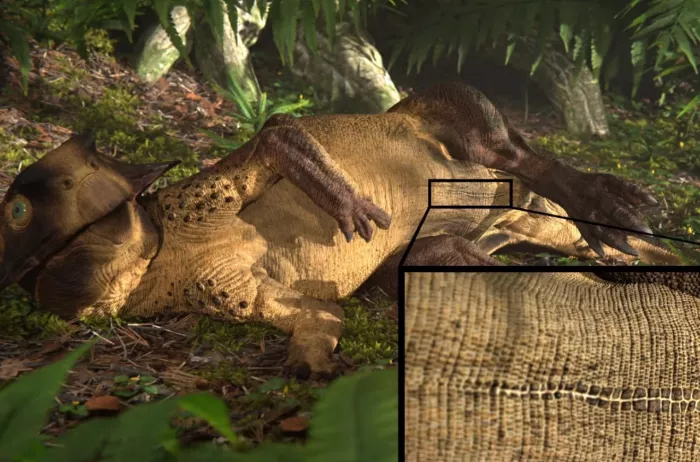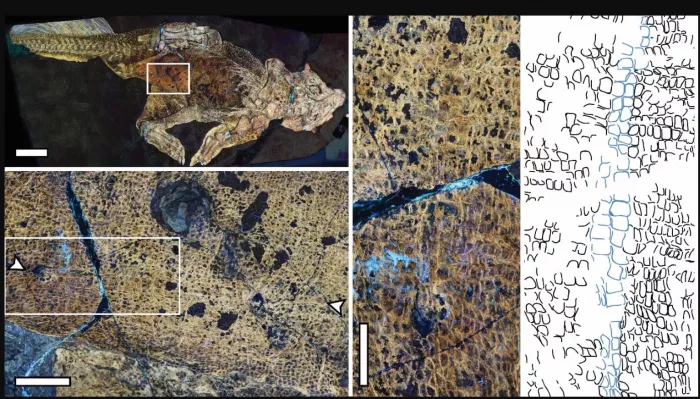
In humans and other mammals, the navel is a scar left at the junction of the umbilical cord and the fetal body. Although dinosaur embryos themselves were not connected to the umbilical cord, they were directly connected to the yolk sac of their eggs through a slit like abdominal opening. This gap created a slender "umbilical scar" that remained in their abdominal region throughout their lives.
Using a relatively new technique called laser stimulated fluorescence (LSF) imaging, an international team of paleontologists has now found such a scar on a 130million year old dinosaur skin fossil called parrot billed dinosaur. This 2m (6.6ft) long herbivore lived in present-day China during the Cretaceous period.

This special specimen was unearthed in 2002 and has been on display at the senkenberg Museum of natural history in Germany since then. However, until now, its "belly button" has not been noticed.
Dr. Michael Pittman of the Chinese University of Hong Kong said: "using LSF imaging, we found a unique scale surrounded by a long umbilical scar in parrot billed dinosaur specimens, which is similar to some living lizards and crocodiles. We call this scar the navel, which is relatively small in humans. This specimen is the first dinosaur fossil with a navel preserved because of its special preservation state."

A paper on this study was recently published in bmc biology 》In magazines. Scientists from the University of New England in Australia, Unidad ejecutora Lillo of San Miguel de Tucuman in Argentina and the science promotion foundation in Arizona also participated in the study.